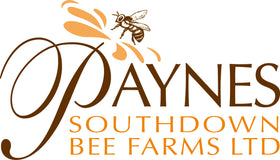About Our Honey
Pure, Raw & Natural
Just How The Bees Make It
3 Generations of Beefarmers, 100 Years of Experience, 75,000,000 Honey bees....
About Our Honey
We are based across Sussex, Hampshire and Kent and are lucky to have a diverse and colourful array of flora available for the bees to forage. Key locations such as the South Down National Park add to the natural and safe environment for the bees. our locations are selected to ensure the bees have good sources of nectar and pollen - both are needed to keep the colonies strong, healthy and vigorous.
Our beekeeping methods have not changed a great deal since my grandfather's time. Colonies are inspected regularly to ensure good health but in such a way that disruption to the bees is kept to a minimum. We harvest twice a year - end of May and again in August, towards the end of the season. We leave enough stores on the hive for the bees to get through the Winter (it is after all, them who do all the hard work!) and any that they collect afterwards is left for them as surplus.
During the Honey Harvest, we process the honey as little as possible. The combs are placed on an extractor line and sharp blades slice off the 'cappings', a layer of wax covering all the cells filled with honey, to reveal the golden liquid beneath. The honey is extracted via centrifugal force - spinning the honey out of each cell of the combs at high speed before passing through a set of strainers. These strainers remove any foreign object from the honey as well as any large bits of beeswax but allow the 'goodness' such as pollen grains to remain. This honey is then stored in airtight tubs and coded for traceability so we know where it came from and when it was harvested. When honey is harvested and extracted correctly, it can be stored like this for years without being tainted, spoiled or fermenting. In fact, they have found honey in the Egyptian tombs that was still in perfect condition.
When the honey is to be bottled into jars or buckets, we gently warm the honey to make it easier to work with whilst transferring into the containers. This is a process that is carefully monitored to make sure the honey is not damaged by the heat. In fact, the honey is not heated beyond 35 degrees - which is the temperature found inside the brood nest area of a beehive. Once it has been gently warmed, it is passed through a set of filters into large tanks holding up to 600kg ready for bottling. The bottling line automatically fills each container up with honey from the tanks before continuing to pass the container down the line. The lid is then applied by hand and spot checks are made as part of our quality control. Labels are then applied automatically, batch numbers are
printed and the jars are boxed ready to be delivered to the shops or direct to our customer's doors.
What Makes It So Special_______
Raw and Natural
We don't heat treat our honey so it is as natural as it should be.
Full of Goodness
No fine filters here! we only use course filters to maintain all the goodness that you should find in honey, and none of the bits that shouldn't be there.
Sussex in a Jar
Location, location, location.
Nothing like having a bit of the Sussex countryside in a jar. Every bite will have the flavours and smell of the Sussex Southdowns National Park
From Past to Future
We are third generation beefarmers, running a family business for 100 years. We like to think we've learnt a few things along that path, and we like to think we pass it on inside every jar of our honey!
